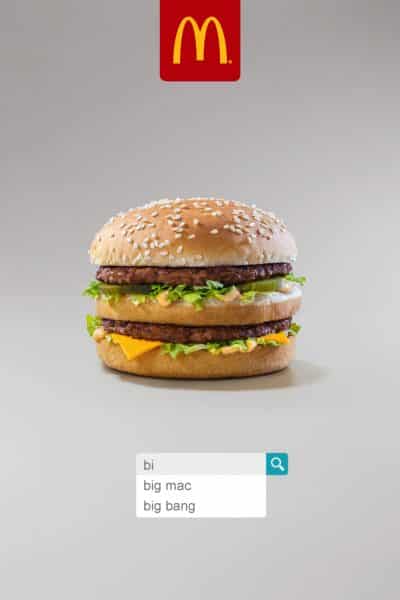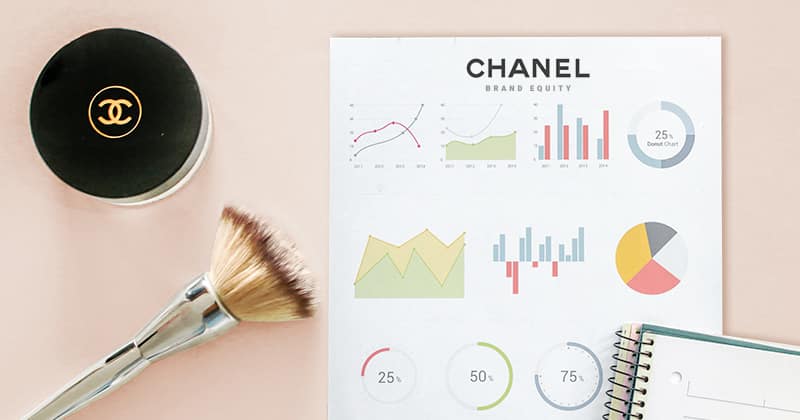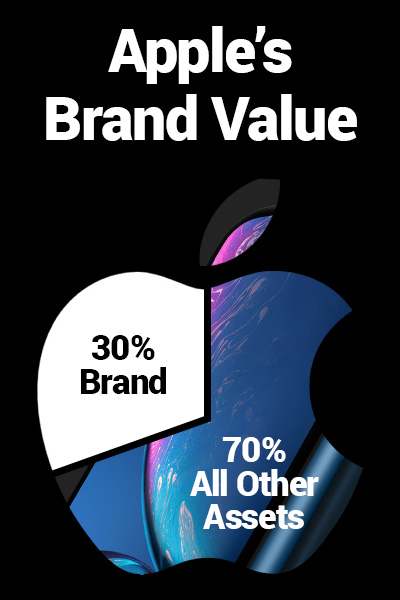Brand Equity: the portion a company’s value attributable to its brand(s).
I have always been interested in why some brands are loved so much that they have a cult following, like Apple, and why people are willing to trade a small fortune to be part of a brand, like Ferrari. These brands are so awesome because they have built up their brand equity over time.
How you build such brand equity? Well, the first step is understanding what brand equity is.
Brand equity is the value of a brand. A popular brand enables a business to sell more products at a higher profit margin; that ability is valuable. Brand equity is the dollar value a company would pay to purchase a brand or sell their brand for.
Sophisticated brand managers have the mindset that a brand is an asset, and working on it and investing in it will make it more valuable over time. Everything they do is to make the brand more valuable to the organization.
After reading this article, you will be able to understand brand equity and explain the concept to other people. We start by reviewing both the simple definition of brand equity and one someone would learn in business school. We look at some examples of brand equity, like the value of Apple’s brand. Then we look at all the things that add up to create brand equity. Then we explain the importance of brand equity as a concept.
Editor’s note: This article was originally published on September 2, 2016, and then received an extensive rewrite on July 8, 2020.
Brand Equity Definitions
Here we will define the concept of brand equity in simple terms, and then get into the complicated definition that someone would be taught in business school.
Brand Equity: Simplified
Brand equity is how much money a business would buy a brand, or sell their brand for.
If you add a well-known, well-loved brand to a blank product, then more people will be interested in it, and you can charge more for it.
For example, a plain white t-shirt will be hard to sell, and the store can only charge about $5 for the tee. But put a Supreme logo on a white t-shirt, and it can sell for hundreds of dollars.
Being able to sell more products at higher is THE thing businesses value. They would pay a lot for that ability, that brand.
Brand equity is the value of a brand for a business. It is the amount of money a company would pay for a brand, or sell their brand for.
The Business School Definition of Brand Equity
The aggregate value of the brand, it’s assets, and it’s reputation in the market.
Brand equity is the dollar value of the brand taken as a singular asset. It is the total value of the brand name, its brand assets, and how the people of the market view, feel, and behave in the presence of the brand.
Brand equity is an acknowledgment that the feelings the customer base has towards a brand have value to a business. Organizations whose customers feel nothing or negative towards the brand have no brand value, or their brand is a liability. Customers will repeatedly purchase when they have positive feelings towards the brand, and that has a monetary value.
Two models of brand equity are taught in business school: the Aaker model and the Keller model. We go into both later in the article (see Components of Brand Equity.)
Examples of Brand Equity
Apple’s Brand Equity
A third of the value of Apple is contained in their brands.
The value of Apple (at this time) is $703.5 B, and the value of the brand $234 B (according to Interbrand), so 30% of the total value of the company comes from the Apple brand and all their sub-brands (iPhone, Mac, iCloud, etc.)
That $234 B brand value means that Apple would lose nearly half of its value overnight if some bizarre trademark dispute meant that Apple could no longer sell under the name “Apple,” use the logo, similar graphics, or the apple.com website, and not use any other brands as well.
Theoretically, Apple could sell its brand for $234 B to Microsoft, Facebook, or any business with that much cash or stock.
Granted, it would be hard to separate the Apple brand from the rest of the company. Brand equity is entwined with every other component of a company’s value. Companies are gestalt; they are their complete whole, inherently indivisible. The intertwined nature of brands doesn’t stop companies from licensing their brand, which can have good and bad consequences (brand dilution).
It’s also interesting to note that Apple spends $1.8 B a year in advertising. That may seem like a large number, but it is not that much consider the brand is worth $234 B, only 0.8%.
Because Apple’s brand is so valuable and so well love, they generate a lot of interest from a small investment in advertising. One of the benefits of having a valuable brand is your advertising dollars go further because ads from a well-known / well-loved brand get more attention from viewers.
That relatively small advertising investment also shows that a brand isn’t earned through advertising alone. Apple has developed it’s brand through advertising as well as delivering consumer-focused solutions for decades. Most of their goodwill comes from the positive experiences customers have with their products. Many people will not consider buying products from the competitors of Apple.
The brands of the world with the highest brand equity.
| Brand | Brand Equity (USD, billions) | % of Market Cap |
| Apple | 234 | 30% |
| 168 | 20% | |
| Amazon | 125 | 14% |
| Microsoft | 109 | 10% |
| Coca-Cola | 63 | 27% |
| Samsung | 61 | 5% |
| Toyota | 56 | 28% |
| Mercedes | 51 | 85% |
| McDonalds | 45 | 28% |
| Disney | 44 | 18% |
Building and Loosing Brand Equity
A brand that run with a smart strategy that delivers a great product will grow in value. But public relation disasters can lower a brand’s equity rather quickly. This can be so extreme that brand equity can actually be a negative number.
We elaborate on all these below.
Building Brand Equity
The continual setting and fulfillment of a brand promise grows brand equity.
A company builds a brand by communicating a brand promise and fulfilling it.
A brand’s promise is its unique value offering that customers get excited about. The brand promise is communicated through advertising, websites, packaging, and sales pitches. All of these set an expectation for the product in the minds of the customer.
The brand promise is fulfilled through the product. We are talking about the customer experience. This includes the product directly and the purchasing experience, customer service, training, and setup process. For services, this consists of the friendliness and helpfulness of the staff, the aesthetics of the environment, wait times, etc.

For example, if McDonald’s gets me excited with an advertisement showing a ready-to-order Big Mac that looks warm, juicy, and flavorful, then that experience is their brand promise. If I come in, order, and enjoy that burger for all of the reasons I was excited, then I will be more inclined to come back and buy again. Brand equity grows.
The Mcdonald’s brand grows because they set a brand promise and fulfill it millions of times a day for people around the world. It is an engine that churns out brand equity.
What if they fail to live up to their brand promise? Let’s say the burger didn’t look like it did on the ads, was dry and flavorless, or took forever to receive. I would have a bad experience, and I would be less likely to believe McDonald’s future brand promises.
Companies that fulfill their brand promise consistently generate media and word-of-mouth buzz. Media outlets and customers promote the brand for free.
This free promotion is what turns great brands into massive brands. Companies cannot rely on paid advertisement alone to build a brand – the numbers just don’t add up. At a certain point, advertising becomes too expensive to make money on the sales it generates. But reviews and recommendations cost nothing but increase brand equity.
Sudden Loss of Brand Equity & Negative Brand Equity
Public relation disasters can reduce the value of the brand or make it a liability.
We have seen brands lose their value overnight:
- BP with the oil spill in the Gulf of Mexico
- Volkswagen’s cheating of diesel emissions tests
- United Airline’s overbooking policy resulting in a video of a customer being physically tossed off a plane
- Abercrombie & Fitch CEO explicitly saying they only want to sell to the “cool and popular kids.”
PR disasters can reduce the value of the brand quickly. People do not want to associate with infamous companies, so they are less likely to purchase products from the brand. Brand equity is the value of customers being more inclined to buy from the brand (not less), so PR disasters devalue the asset that is the brand.
Theoretically, a brand can experience a PR disaster so bad that it results in negative brand equity. This means that a product with that brand is less likely to sell than a product with no brand. The brand is a liability at this point. The brand is forced to rebrand and trade under a new name.
A valuable brand turning completely toxic rarely happens in practice. As infamous as some of these incidents seem, many people don’t hear about them or don’t care. Brands can usually rebuild their image by fulfilling the brand promise for the people in this base of customers.
Components of Brand Equity
A valuable brand is the sum of a few attributes, each with its own value.
Breaking down a brand into its parts can be helpful to understand and value brands.
Every valuable brand is not the same; they have different strengths and weaknesses. There are two models for breaking down brand equity: the Aaker model and the Keller model.
Both models contain brand awareness, the number of people who are aware of the brand. All the other parts of brand equity rely on the brand being well known, at least to people in the market for their types of products.
All other brand equity components are the thoughts and feelings of the people who are aware of the brand and how they affect behavior. Customers who are aware of the brand and have positive thoughts and feelings are more likely to engage the brand. Loyalty, associations, perceived quality, meaning, and resonance are simply concepts that break down customers’ conceptions into understandable parts.
Let’s start to learn about the models:
Aaker Brand Equity Model

David Aaker popularized the idea of a brand as an intangible asset in his book Managing Brand Equity. More recently, he lays out the model in his blog article and in the book that sums all his writing: Aaker on Branding (available on Amazon and Barnes & Noble).
The components of brand equity in the Aaker model are:
- Brand Loyalty
- Brand Awareness
- Brand Associations
- Perceived Quality
- Brand Assets
Brand Loyalty
Brand loyalty is how likely a customer is to repurchase from a brand after their initial. A customer loyal to a brand will only purchase that brand for that product category, versus a customer who is not brand loyal and will buy any brand of a product.
For example, if a person has bought a string of three Subarus in a row, then they would be considered brand loyal to Subaru.
A valuable brand has cultivated many customers who are brand loyal. Brand loyalty can be measured in aggregate by dividing the number of reourchasing customers by the total number of customers. For example, “Subaru ranks highest [in brand loyalty] amongst mass-market brands—and highest overall—with a loyalty rate of 61.5%” according to JD Power
Net Promoter Score (NPS), which we discussed earlier in the article, can illustrate brand loyalty if you cannot directly measure brand loyalty.
Brand Awareness
Brand awareness is how many people are aware of a given brand.
A customer cannot buy from a brand if they are entirely unaware of it. Awareness always precedes the purchase for the customer, so a well known brand will have more opportunities to win customers. For this reason, a well-known brand is valuable and has high brand equity.
Brand awareness has the side benefit of making a brand more likely to be chosen over lesser-known brands. People assume that if they recognize and remember a brand, then there has to be a reason. That boost is especially true if the brand was a recommendation of a friend or family member.
Learn more about Brand Awareness and how to grow it in our guide right here on BMB.
Brand Associations
A brand association is a thought that is commonly paired with the brand in the mind of a customer. Brand associations that benefit the sales process are valuable, and thus a brand with a lot of equity has positive brand associations.
For example, Cottonelle has spent millions of dollars building the association between their brand and “soft.” If a customer values a soft toilet paper, then they will buy Cottonelle. Is Cottonelle actually the softest toilet paper? It doesn’t matter because it is in the customer’s mind after seeing dozens of ads pairing the brand with soft kittens, white clouds, and comfy cotton fabric.
Perceived Quality
Perceived quality is the reputation a brand has for producing quality goods. Customers believe that products from a brand with high perceived quality will solve their problem quickly, are well-designed, be free of defects or bugs, feel nice to use, and resist wear, tear, and breakage.
Brands are perceived as high quality when they set a brand promise and meet or exceed the customer’s expectation set by that promise. For example, Apple promises a simple and elegant smartphone, and most people feel they live up to that promise. Therefore their products are perceived as high quality.
It is worth noting that brands with high perceived quality may or may not produce high-quality products. While the simplest way to build a reputation for quality is to deliver high-quality goods, the production quality is not the only factor.
Factors like the design of the brand, the purchasing experience, the reputation of the retailers, the brand associations, and the advertising can affect perceived quality as much as the quality of the good themselves.
Brand Assets
Brand assets are the designs, writing, and media that are the brand owner’s intellectual property.
A logo or tagline can be valuable, especially if they are easily recognizable and are registered trademarks. A recognizable and defendable iconic product design, like the Porsche 911 or Kitchenaid Stand Mixer, is valuable. Well written copy or insightful market research are also examples of brand assets.
Note that brand assets are only valuable because governments in most countries give legal protection to intellectual property. In most first-world states, a company can be sued if it tries to leverage another business’s brand asset without a license. A court can order the infringing party to pay back all money they made and damages to the rights holder.
To learn more about Brand Assets, read our article about Logos with TMs or the article where we answer “are brands intangible assets?”
Keller’s Model of Brand Equity
An alternative view on brand equity is Keller’s Model of Brand Equity, developed by Kevin Lane Keller, a professor of marketing at Tuck at Dartmouth University. He outlaid the model in his textbook Strategic Brand Marketing, available for purchase on Amazon.

The components of brand equity in Keller’s Model are:
- Brand Identity
- Brand Meaning
- Brand Response
- Resonance
Keller’s model gives executives and brand managers a ladder in which their business can climb up. Basic brands with low value stay at level one, where brands that speak to customers with high brand equity achieve level 4.
The first level, brand identity, refers to a brand that is unique enough looking to be memorable and have some exposure and gain notoriety. Level two, brand meaning, is how the brand communicates what it stands for, the brand’s personality, and the performance of the product. Level three, brand response, is how the market takes to your brand; is the message one that speaks to consumers and will build positive brand associations over time. The pinnacle level, resonance, is achieved when customers personally connect with the brand and repeatedly purchase, recommend to friends and family, and are part of a community of customers. Cult brands like NASCAR, Apple, and Harley Davidson achieve resonance.
I won’t go into this in-depth, but I wanted to make sure you were aware of the alternate model. I encourage you to read Qualtric’s article to learn more about both models.
Why is Brand Equity Important?
Treating a brand as if it has monetary value was one of the most important business ideas in history.
Organizations that have invested in their brands and have grown brand equity have many opportunities to leverage their asset into making money.
Executives should care about understanding and building brand equity because their brand could, one day, unlock doors to them that will never open for poorly managed brands. The idea of brand as an intangible asset is one of the most important concepts in the business of the later part of the 20th century. Companies like Proctor & Gamble, Apple, and IBM would not be the successful juggernauts they are without realizing their brands were valuable and invested in them.
Companies with valuable brands can:
- Get more out of their advertising
- Grow their market share
- Charge a premium
- License their brand
- Extend their brand into new markets
More Effective Advertising
Brands that are valuable sell more products for every dollar they spend on advertising.
Our brains only perceive and remember what is we consider valuable. People tune out all advertising that is irrelevant to them.
But ads from brands that are well-known / well-loved suddenly become relevant. We have all had the experience of tuning out a set of commercials just to have one of them pop on and come to our attention. Maybe it featured a new product from an exciting brand, a movie we are excited to see, a car that looks cool, or an influencer we trust.
Customers willingly turning their attention to ads from a brand invests in advertising have a higher return on investment (ROI).
Market Share
Businesses that invest in their brand equity grow their market share.
A brand and its unique meaning constitute a strategic advantage that a business has over its competitors that they cannot replicate. That asymmetrical advantage results in an increase in market share. Over and over again, customers will choose the product from the brand they know and trust over the unknown or unloved brand.
Price Premium
Valuable brands can charge a premium for their products.
Brands that are perceived as high quality or desirable can charge more than the market price. The security customers feel by buying from a brand they know, like and trust has value to them, and they will pay for it.
Licensing
Brands with high brand equity can leverage their asset through licensing.
Other businesses will pay money to temporarily have the right to put the brand on their product. Paying for the use of the brand is a standard business practice called licensing. For example, Pepsico licenses the Starbucks brand name to market their bottled coffee drinks and energy drinks. License fees that go to the brand owner are pure profit.
Brand Extensions
Brands with value can grow their business by introducing products in new markets with a higher chance of success.
Brands that have become well recognized and respected for one type of product can venture into making another type of product, and the name recognition and goodwill may follow. This ability to quickly and inexpensively enter new markets is valuable.
We presume that we are considering two types are products that make sense to be made by the same brand, but it’s not always the case. Cosmopolitan, the magazine brand, tried their luck in the single-serving yogurt market and failed miserably.
How to Measure Brand Equity
You measure brand equity by determining how many sales are attributable to the brand(s) and assigning a value to that.
Valuing a brand is a logical process that can help executives understand the asset value of a brand, and how it is dispersed around the world.
There is no objective, agreed-upon method for valuing a brand, but there are steps that will always be a part of the process. David Aaker goes into these steps in more detail in his books on branding.
- Estimate the value of units sold driven by the brand.
- Subtract the cost of tangible assets.
- Estimate what percentage of intangible assets are (the sum) attributable to the brand power vs. other intangible assets (HR, R & D, Patents, Manufacturing Prowess, etc.) This percentage is typically between 10%-30%
An alternative is to play out a hypothetical scenario of how many fewer units would be sold if the same products were sold under an unknown brand. This estimate can be driven by survey data and market testing, which asks customers how likely they are to buy a product without knowing the brand. The difference between actual sales and the reduced sales of the hypothetical scenario illustrates its value.
Calculated brand equity is not useful a reliable metric for seeing if brand building programs are working. The number is too low resolution; an effective program may or may not increase the brand equity number. Calculating brand equity is valuable for executives to make decisions about investing in the future of the company.
Net Promoter Score (NPS) is also a well-known analog for the value of the brand.
You calculate an NPS score by asking a random sample of customers: “How likely is it that you would recommend this company to a friend or colleague?” They rate their answer on a scale from 0 to 10. People who answer between 0 and 6 are considered detractors, 7 and 8 are considered passives, and 9 and 10 are considered promoters. The percentage of detractors is subtracted from the percentage of promoters. Valuable brands score between 70 and 100 on the NPS scale.
Tesla’s had an unusually high NPS score of 96. Apple had an NPS score of 76. Both of these were taken a few years ago.
Conclusion. The concept of brand equity changes the way we spend time and money on marketing.
If the brand has a value like any business asset, then the business should maintain its asset and spend money to grow its value.
If there is no such thing as brand equity, if there is no ongoing value to the brand, then we would act very differently. We would always be pushing for the sale. We would discount our products at the drop of a hat. We would not care about the customer experience. We would rebrand at the drop of a hat because our brand has no value.
But we know that is not true. The ongoing relationship that the people of the market has a value that is true and measurable. We value the relationships we have with our customers, and we set up our brands to speak to them. We stand by our brand’s reputation. We build associations and goodwill with our customers in the hopes they will value the brand themselves.
Your customers will only value your brand as much as you do as the brand manager. If you take your brand seriously, so will the market, and its value will grow.


Leave a Reply